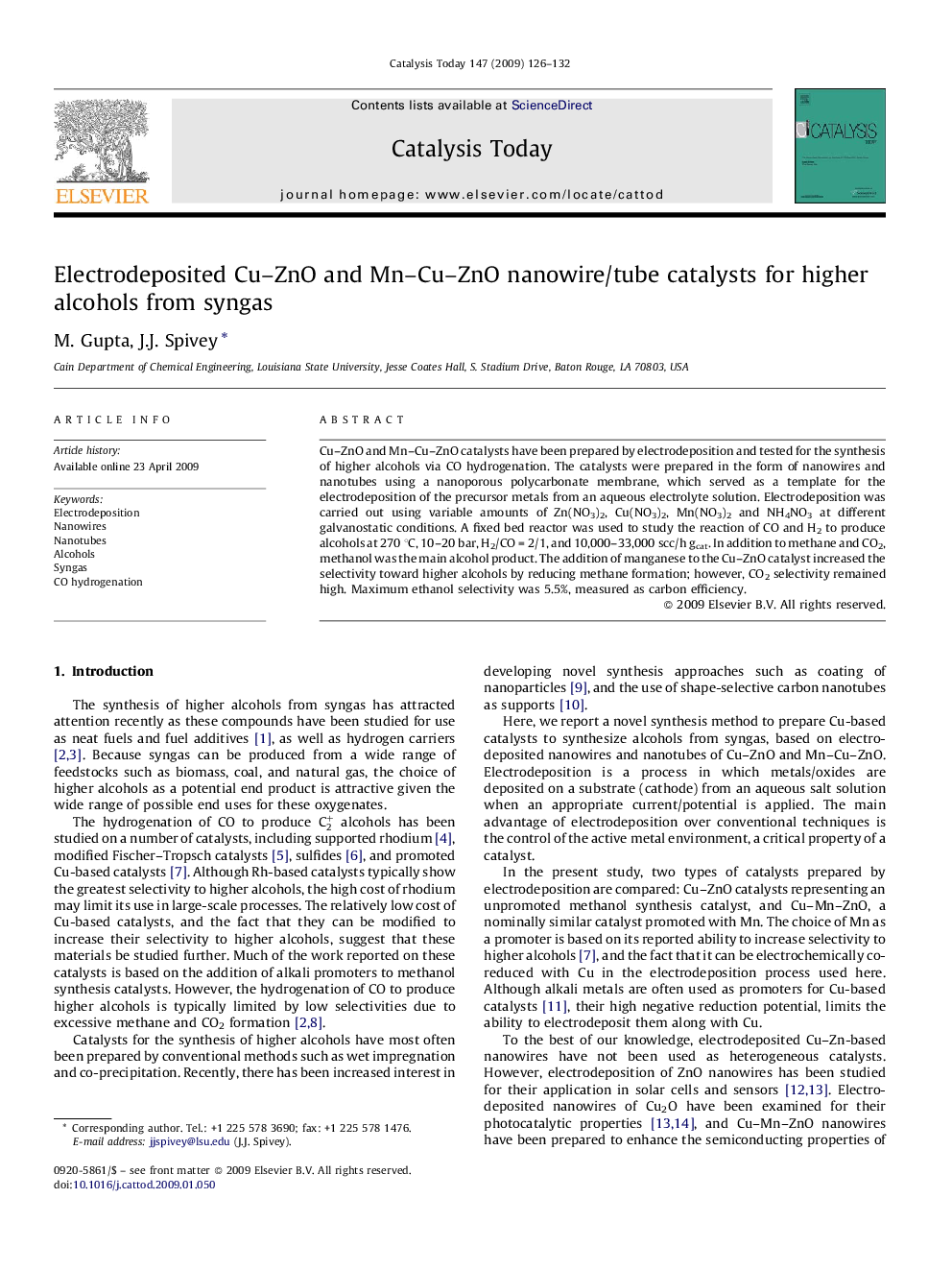| Article ID | Journal | Published Year | Pages | File Type |
|---|---|---|---|---|
| 56982 | Catalysis Today | 2009 | 7 Pages |
Cu–ZnO and Mn–Cu–ZnO catalysts have been prepared by electrodeposition and tested for the synthesis of higher alcohols via CO hydrogenation. The catalysts were prepared in the form of nanowires and nanotubes using a nanoporous polycarbonate membrane, which served as a template for the electrodeposition of the precursor metals from an aqueous electrolyte solution. Electrodeposition was carried out using variable amounts of Zn(NO3)2, Cu(NO3)2, Mn(NO3)2 and NH4NO3 at different galvanostatic conditions. A fixed bed reactor was used to study the reaction of CO and H2 to produce alcohols at 270 °C, 10–20 bar, H2/CO = 2/1, and 10,000–33,000 scc/h gcat. In addition to methane and CO2, methanol was the main alcohol product. The addition of manganese to the Cu–ZnO catalyst increased the selectivity toward higher alcohols by reducing methane formation; however, CO2 selectivity remained high. Maximum ethanol selectivity was 5.5%, measured as carbon efficiency.
